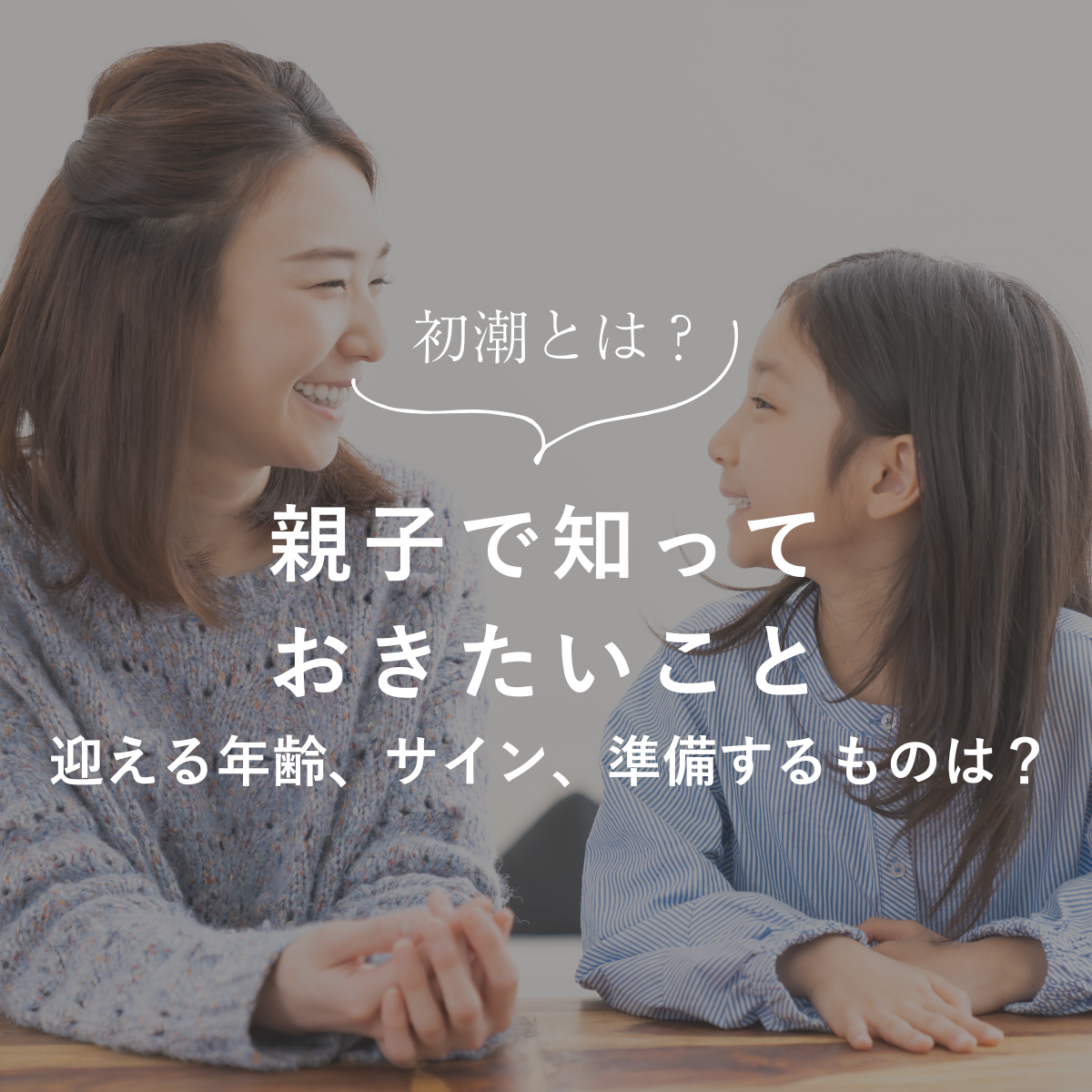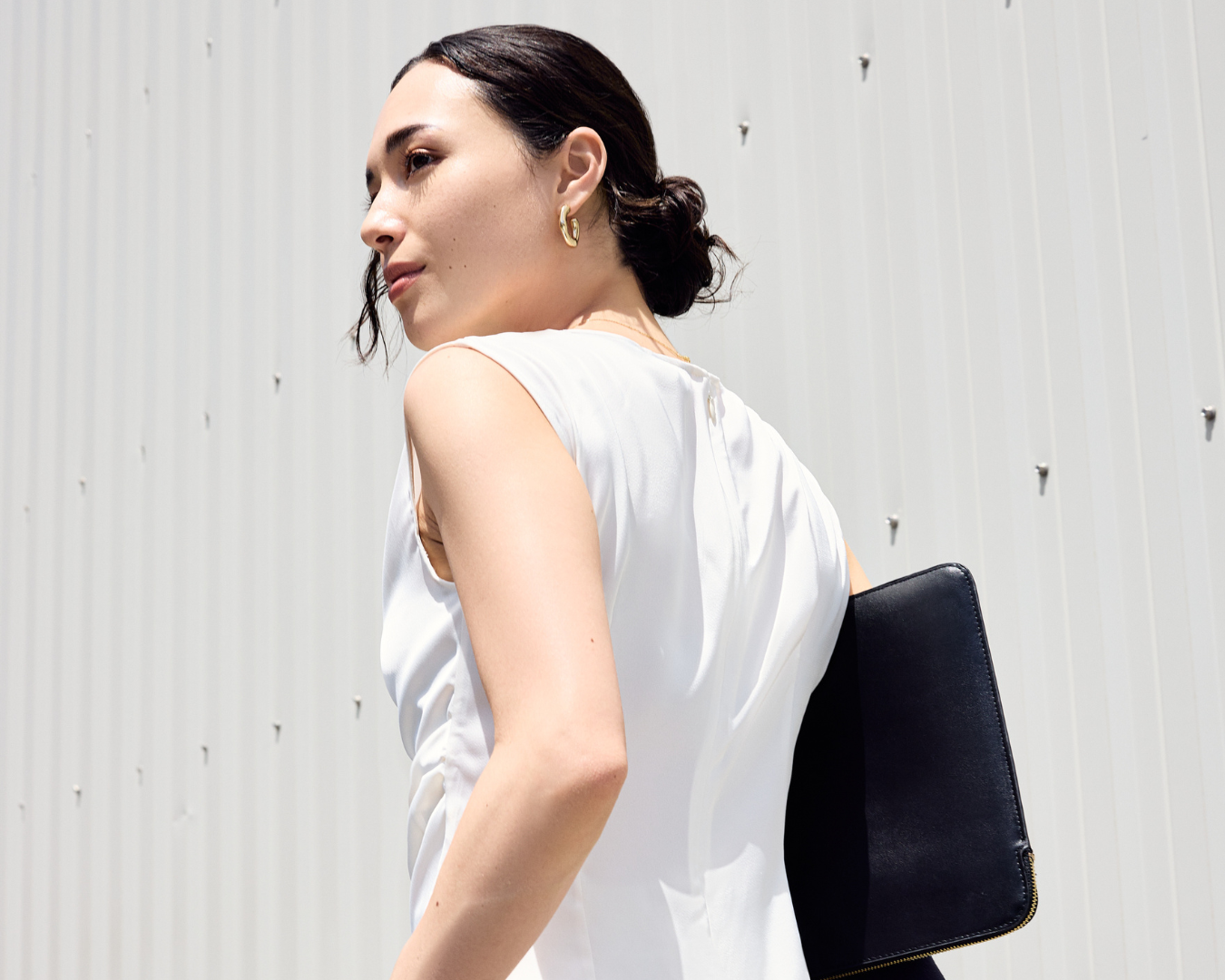The first period is called "menarche" or "menarche."
This time, we will introduce you to things like "When does menstruation usually occur?", "Are there any signs before it starts?", and "What preparations should you make?"
Be prepared so that you're ready for your first period whenever it happens.
When does a girl get her first period?

The average age is 12 , with most women experiencing menarche between the fourth and fifth grades of elementary school and the second year of junior high school. The timing of menarche varies from person to person, so there's no need to worry too much if yours is earlier or later than others. However, if you haven't had your first period by the time you're 15 , it's a good idea to go see a doctor.
(Reference: Japan Society of Obstetrics and Gynecology https://www.jaog.or.jp/qa/youth/shisyunnki09/ )
Are there any signs before it starts?

The most common signs are:
・My chest is swelling
Increased vaginal discharge (sticky, whitish discharge that sticks to underwear)
Hair grows in the armpits and delicate areas
・Acne becomes more likely to occur
However, this also varies greatly from person to person, so there is no need to worry if you don't have these signs. Some people don't have many of these signs and their period starts suddenly, so it's important to prepare in advance.
Things parents and children should prepare

1. Panty liners
Panty liners are sheets that absorb vaginal discharge and are attached to your underwear. They are used before your period, when vaginal discharge tends to increase , and they help prevent your underwear from getting dirty.
2. Napkins
They are used by sticking them on top of sanitary shorts or regular shorts. They are larger than panty liners and absorb menstrual blood. The type of napkin that suits you will vary depending on the amount of blood you have, but it's a good idea to start with two types: one for daytime use and one for nighttime use.
3. Sanitary shorts
Sanitary shorts are shorts designed specifically for menstruation.
When you first get your first period, you may be unfamiliar with how to use your sanitary napkins and forget to change them, or they may slip off and get menstrual blood on your clothes.
Many sanitary shorts are designed to make it easier for napkins to fit snugly, and the crotch (the area between the legs) has a double structure to tuck the wings of the napkin in, preventing the napkin from slipping and reducing the risk of leaks.
Use sanitary spats to prepare for something extra
We also recommend wearing inner shorts that you put on over the shorts with the pad attached. By wearing inner shorts, the shorts will fit snugly against your body, preventing the pad from slipping. It's also recommended when wearing a skirt, as it helps prevent you from getting cold.
<Waterproof and breathable sanitary spats>
Angelite is a sanitary spats that prevents leakage and stuffiness. It is made from functional material that prevents leakage and stuffiness.
The high waterproof function means that even if menstrual blood leaks out, it will not only keep your clothes clean, but also allow sweat produced inside the shorts to escape, keeping you feeling dry and comfortable.
Wearing them gives you peace of mind in situations where you can't change your sanitary napkin for long periods of time, such as during class.
Learn more about Angelite
4. Cute pouch
You'll need a pouch to store your napkins in. Have fun during your period with a cutely designed pouch!
5. Planners and calendars
Get a planner or calendar to keep track of when your period comes. This will help you see how many days your period is and give you an idea of when your next period will come.
Parent-child discussion

1. Proof that you have grown into an adult body
Menstruation is nothing to be ashamed of; it's proof that your body has become an adult. Speak reassuring words to your daughter, such as "Congratulations," "It's proof that you've grown up," and "Please let me know if you have any problems."
2. Basics of menstruation
It's important to talk about menstruation. Teach your child how to choose sanitary napkins based on their menstrual cycle and blood flow. Parent-child communication is also important so that parents can learn to cope with symptoms such as headaches, stomach aches, fatigue, and irritability. Also, explain that your child's body is now an adult and capable of becoming pregnant, and that as a result, they should be careful about sexual behavior.
3. How to use sanitary products and etiquette
Teach your child how to use napkins and sanitary shorts. It's also important to teach them how to dispose of used sanitary products (wrap them in toilet paper or a new sanitary bag so the contents cannot be seen, and throw them in a designated trash can instead of flushing them down the toilet).
4. Anxieties and worries
If your daughter has just had her first period, or has not yet had her period and is feeling anxious or worried, it is a good idea for you and your daughter to talk about it.
Make sure you have a safe and happy first period
The first period can be a confusing experience for both parents and children. By making sure to prepare and discuss it thoroughly with your child, you can welcome your first period with peace of mind!



